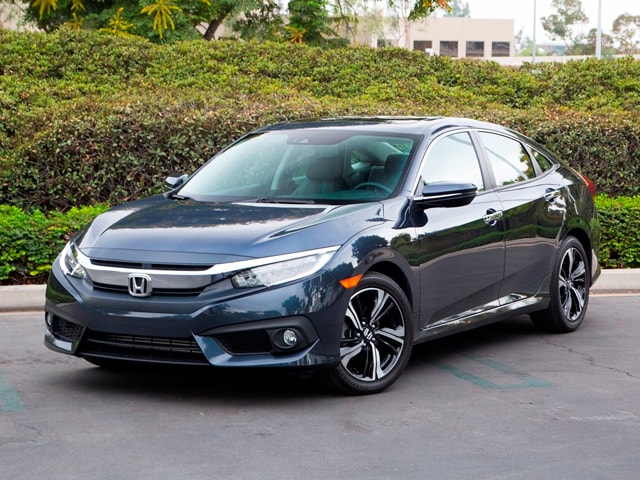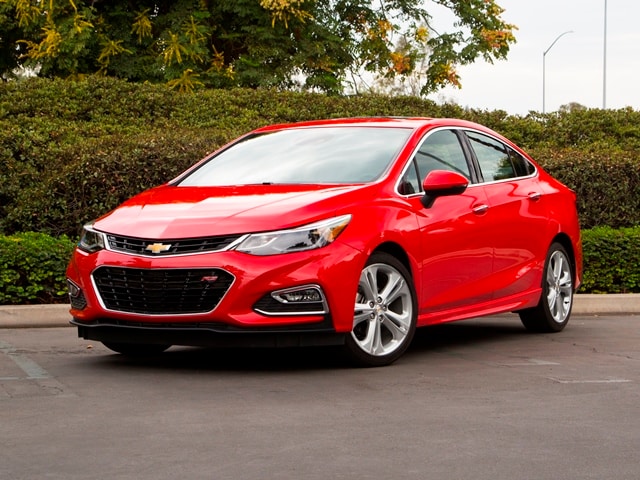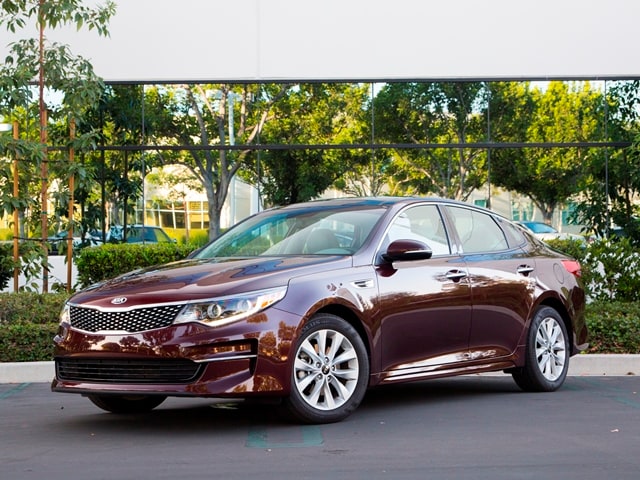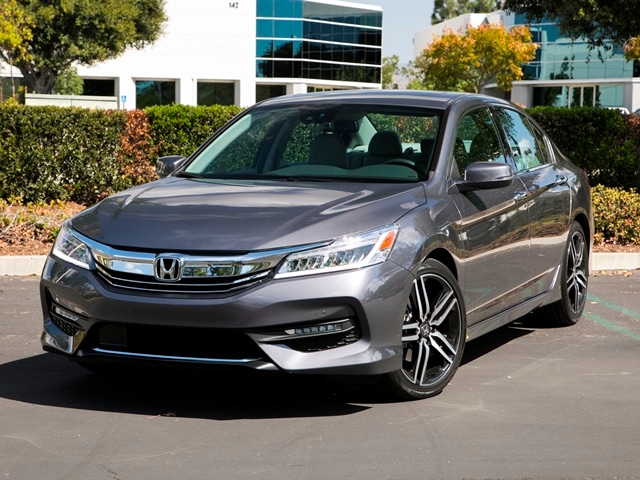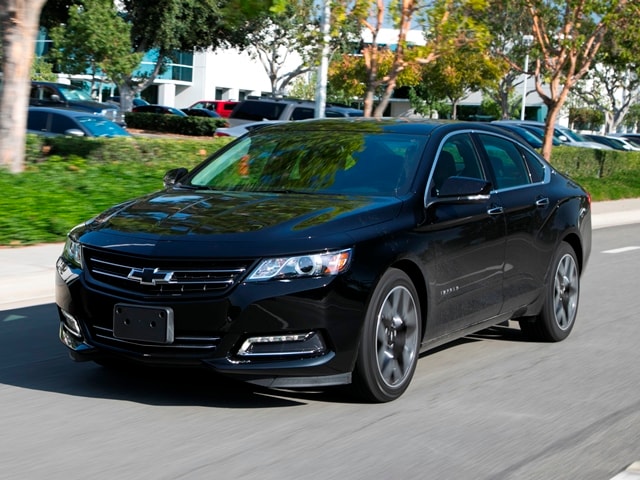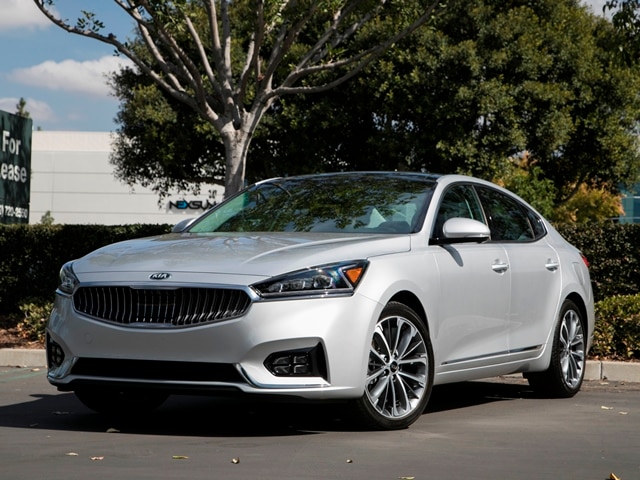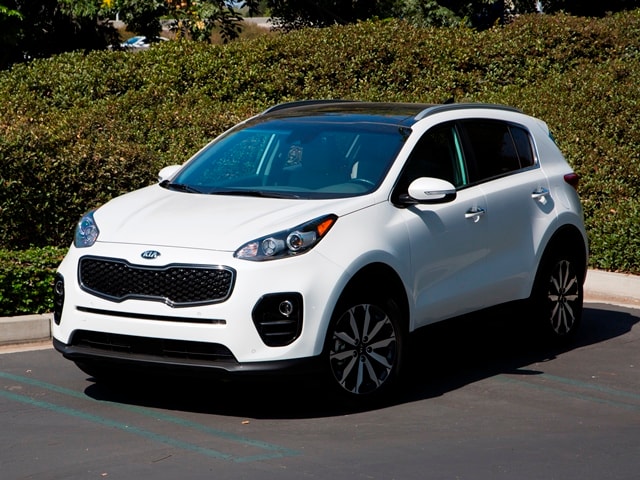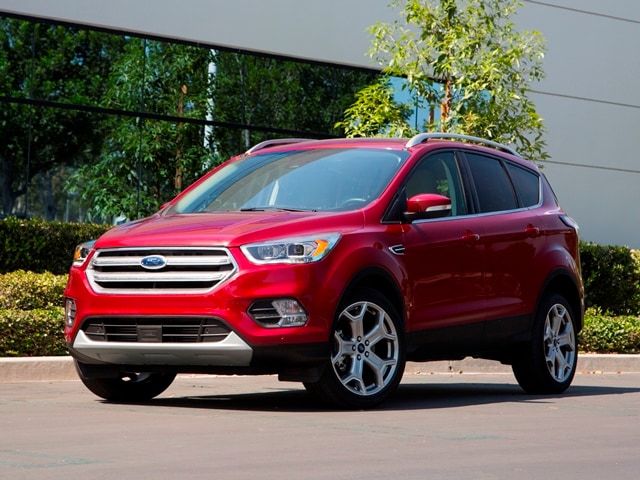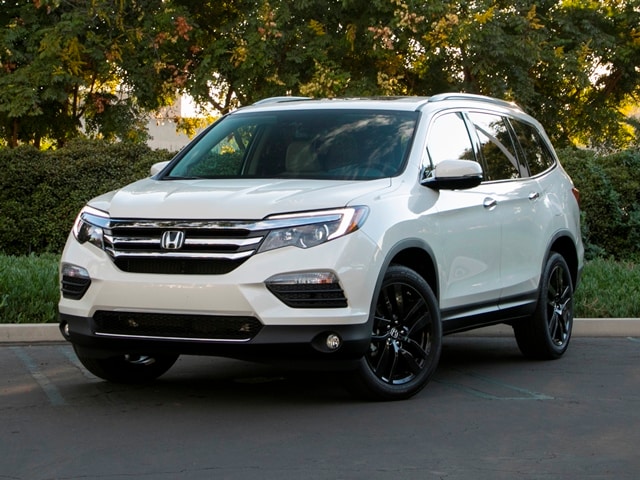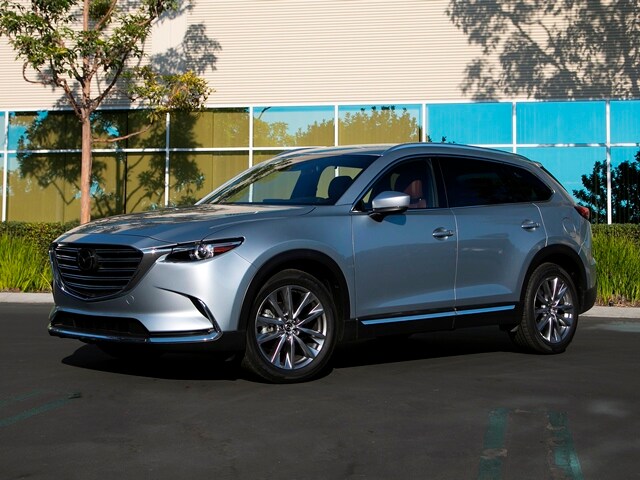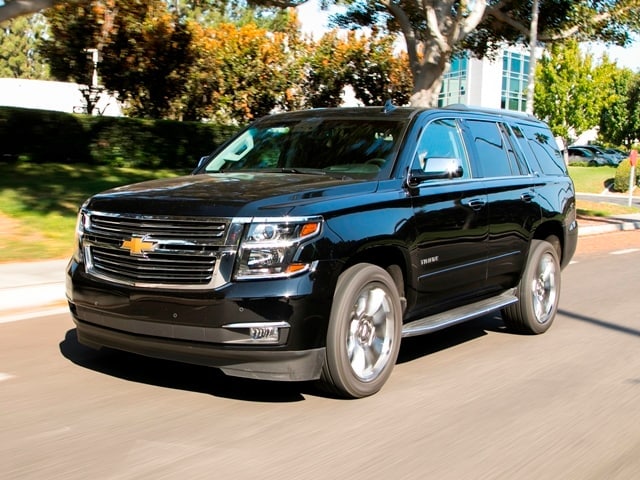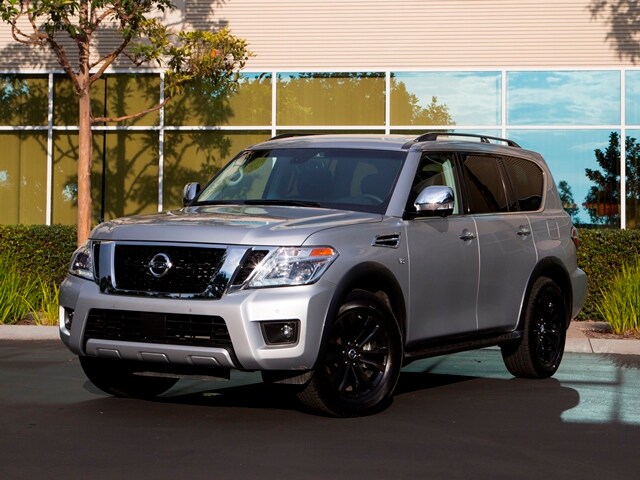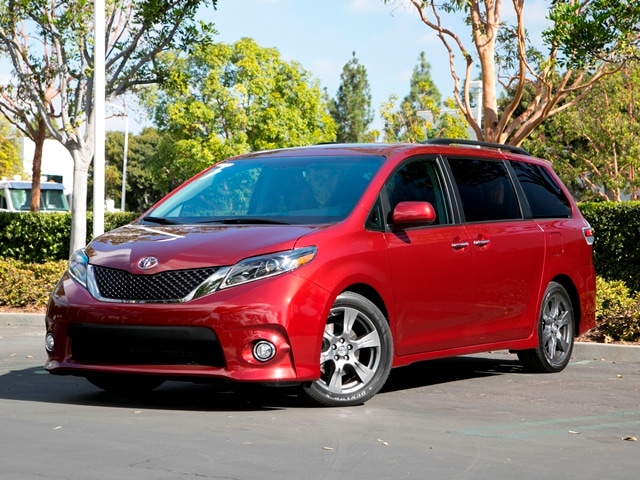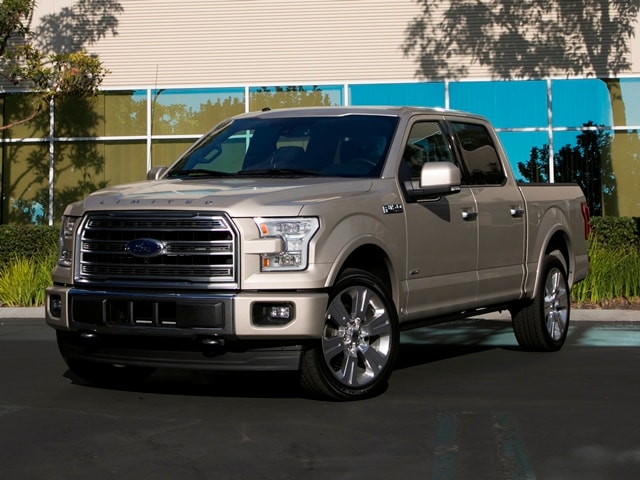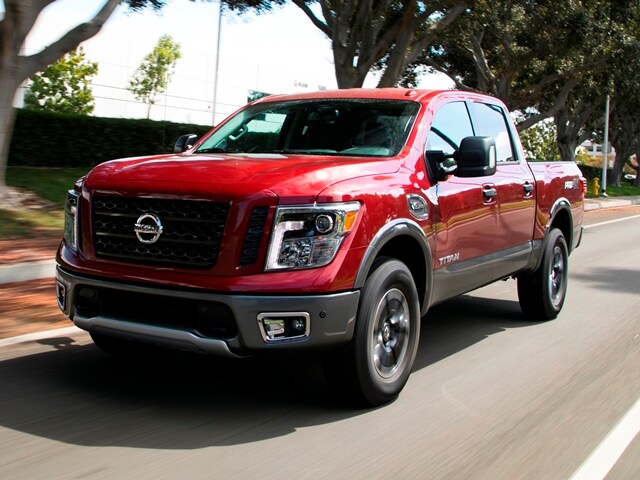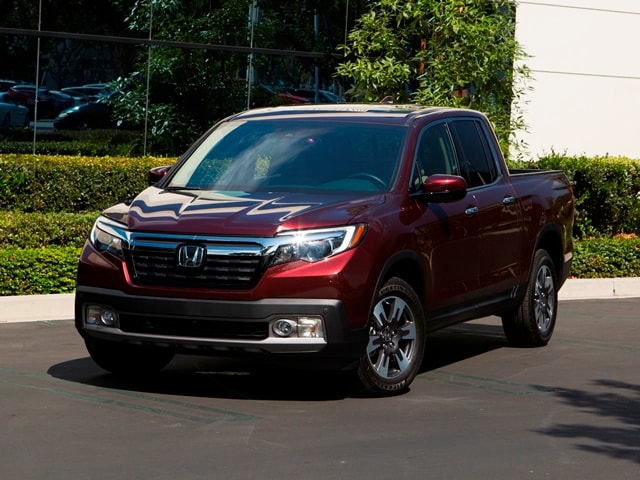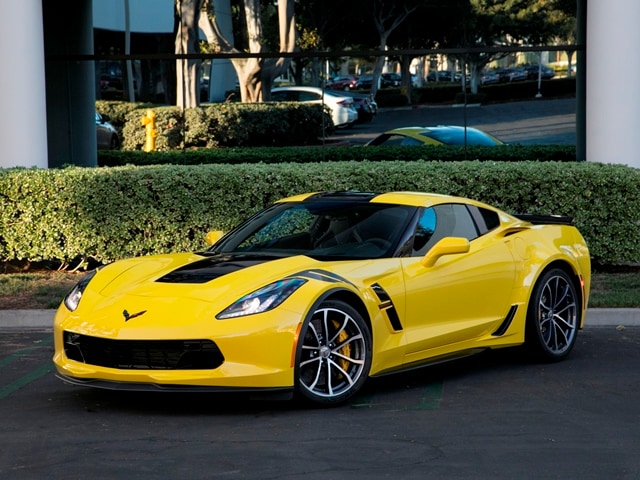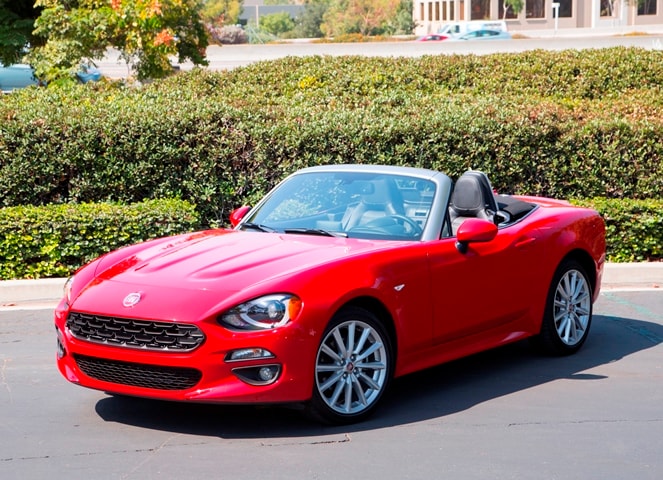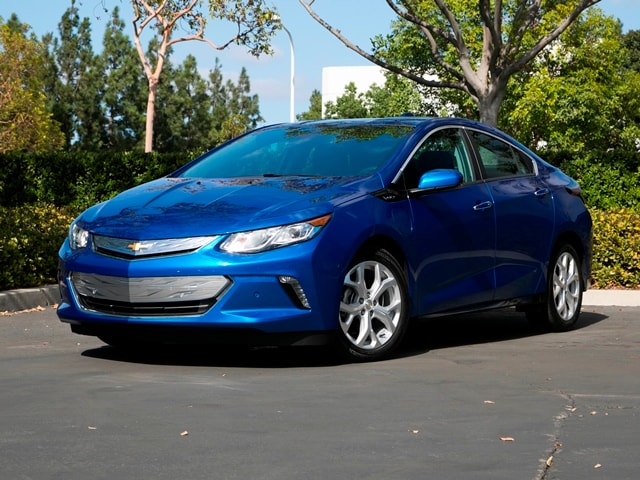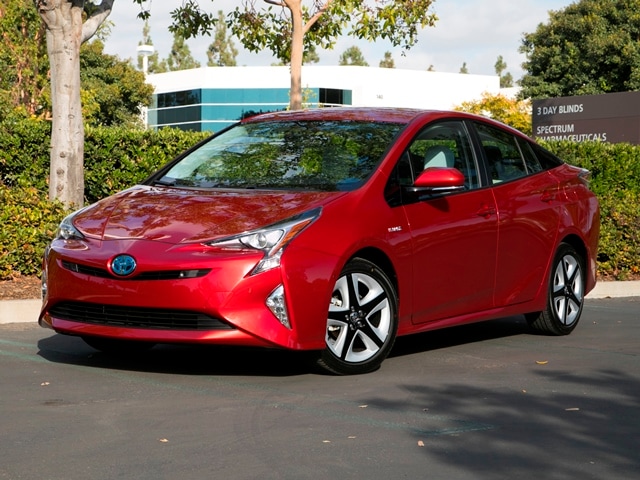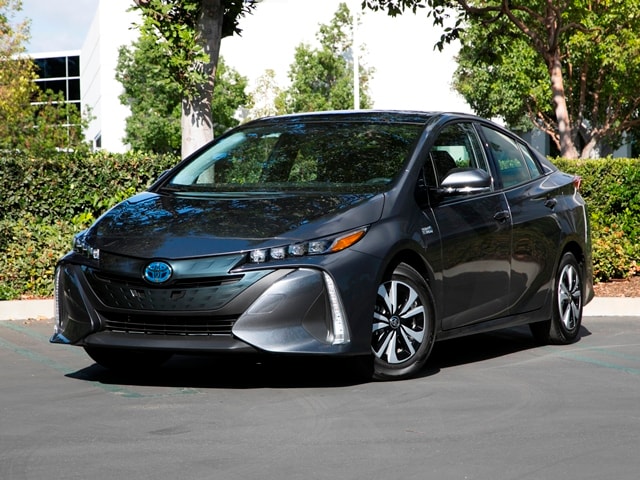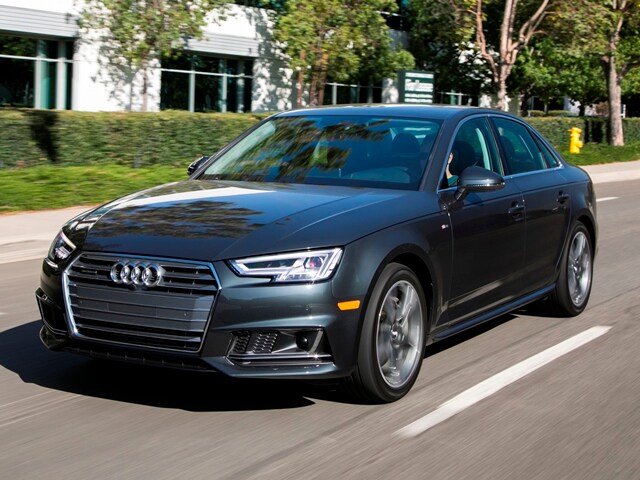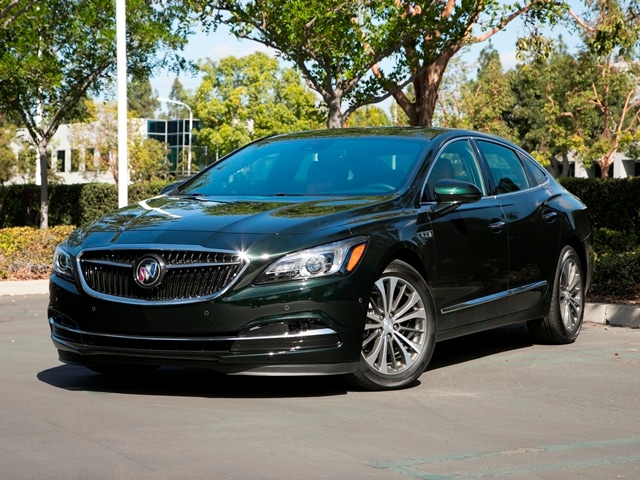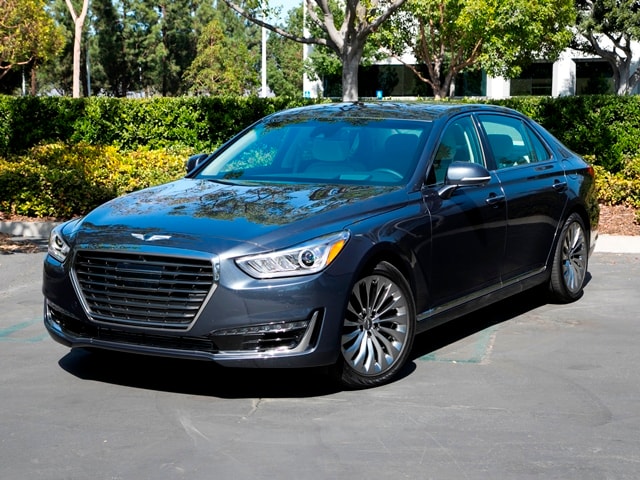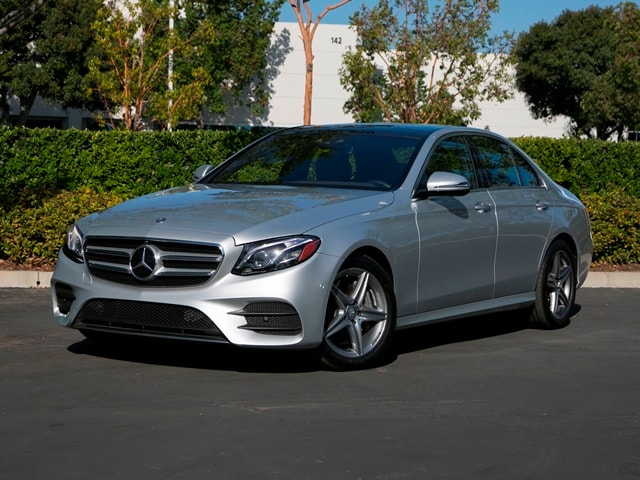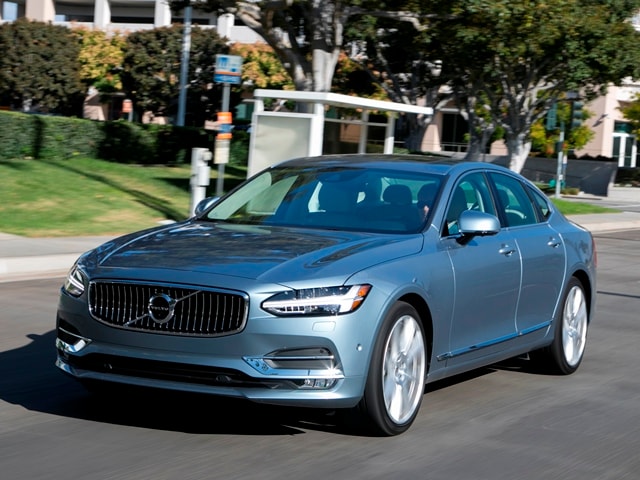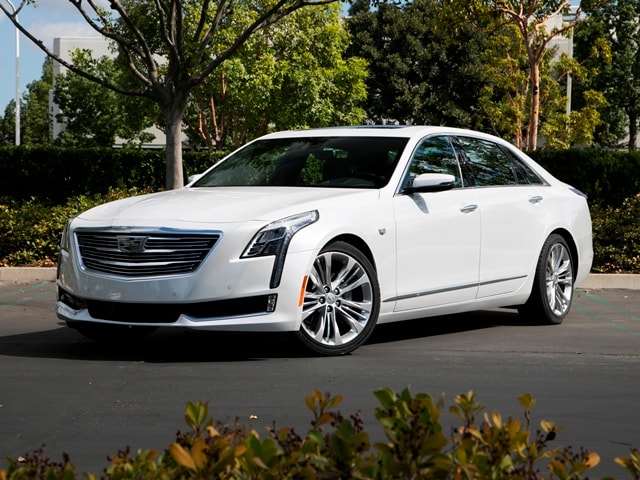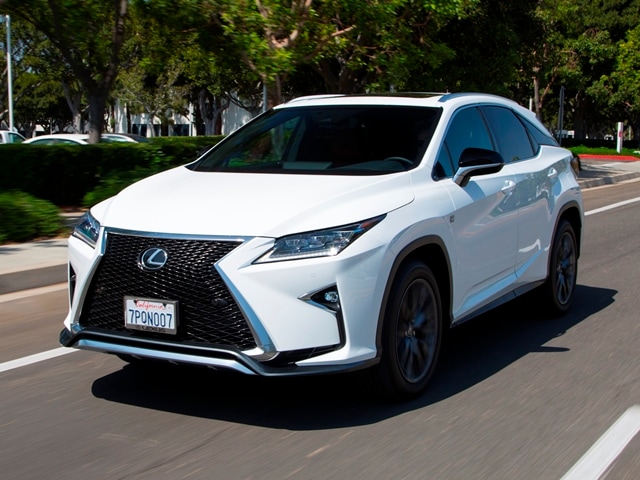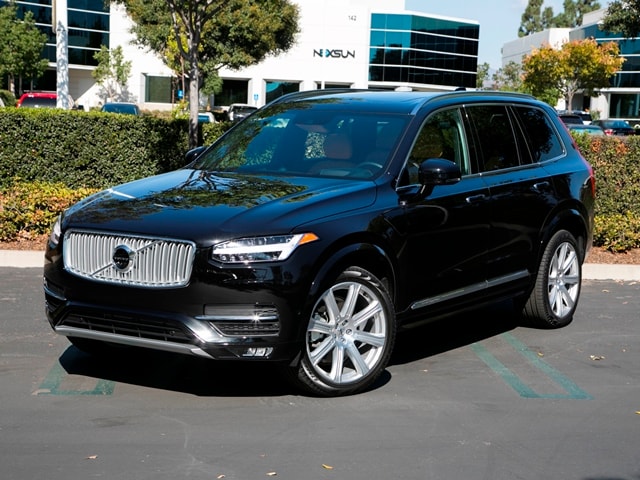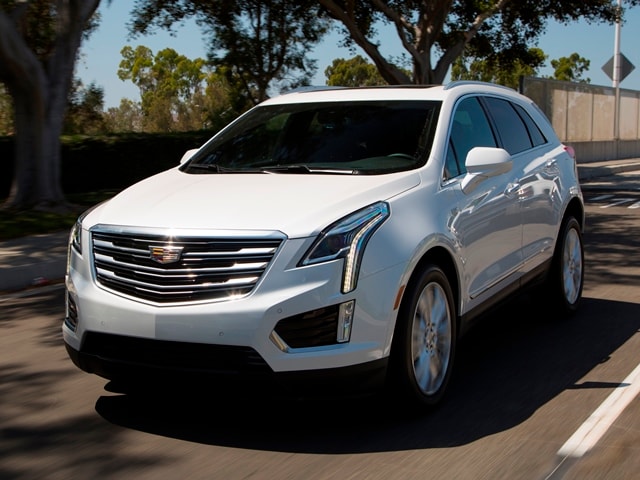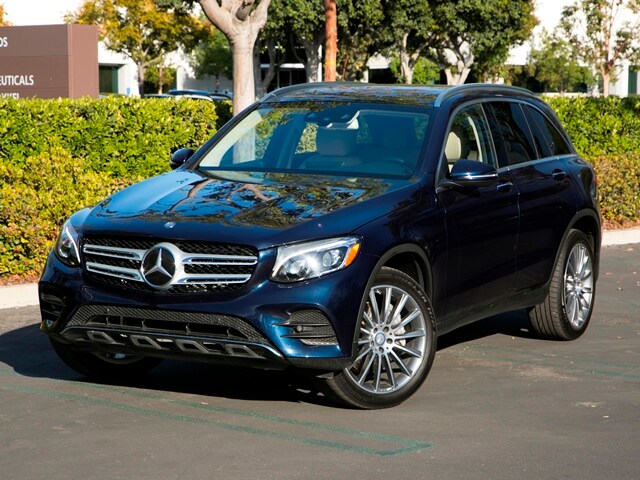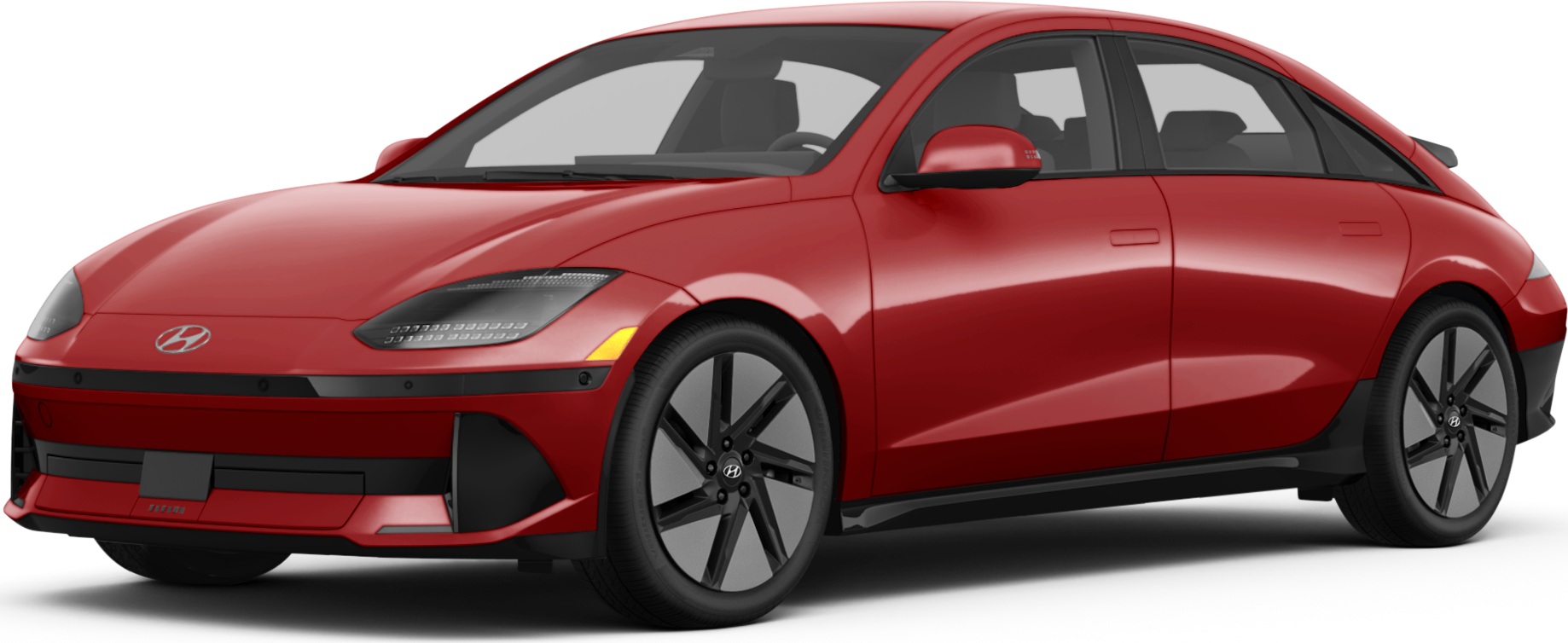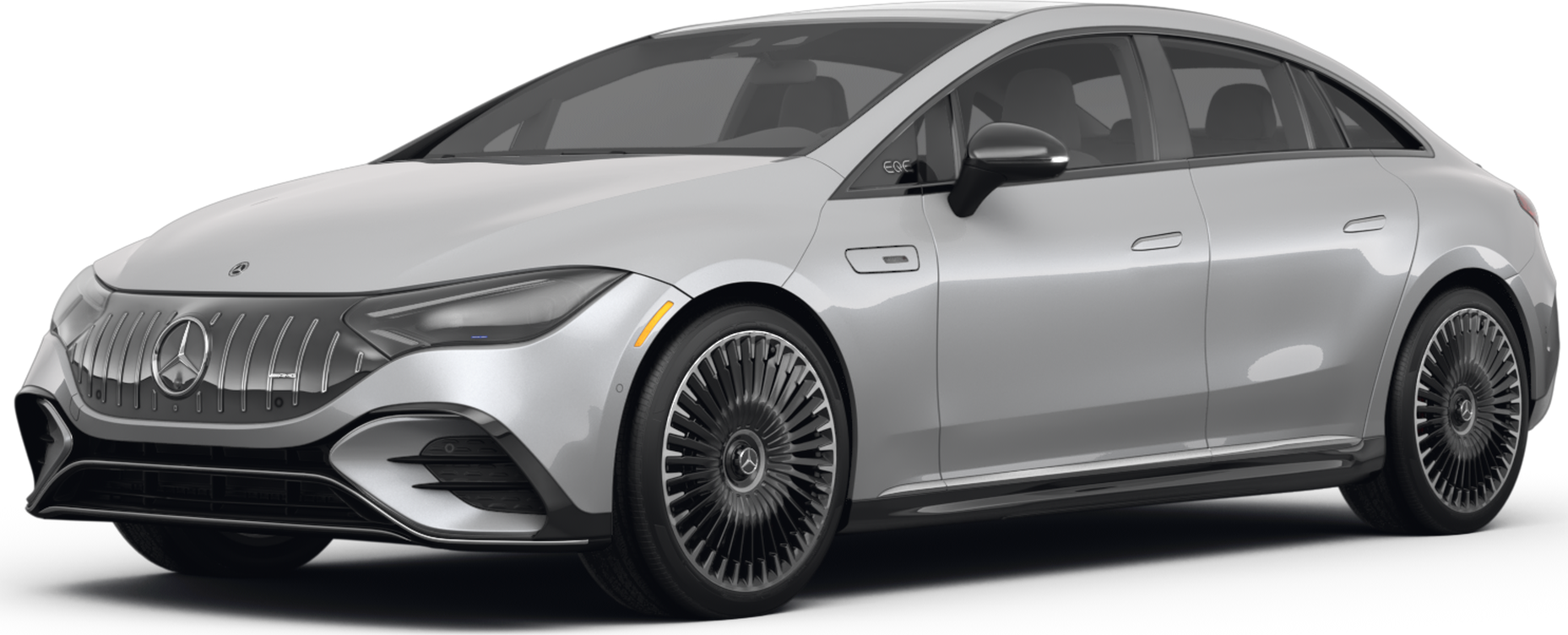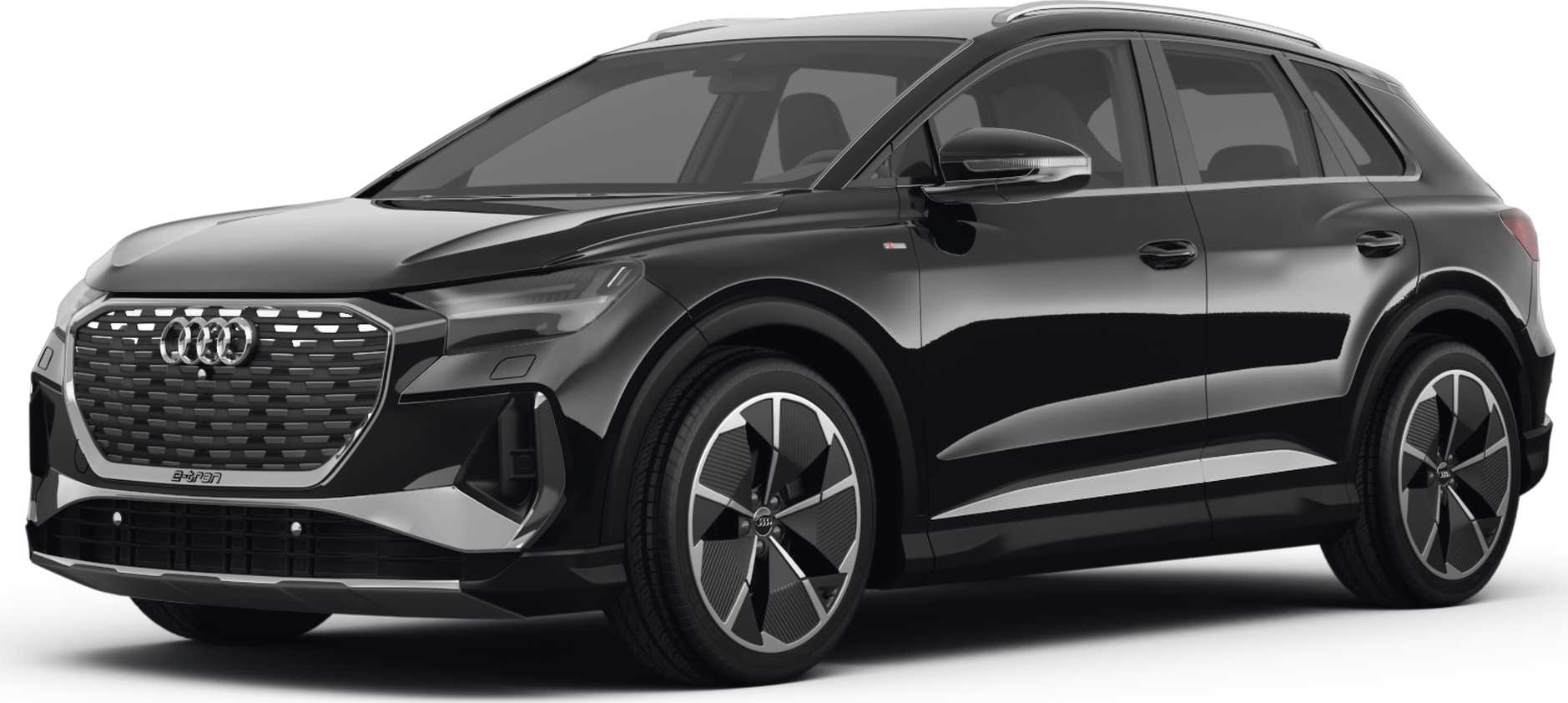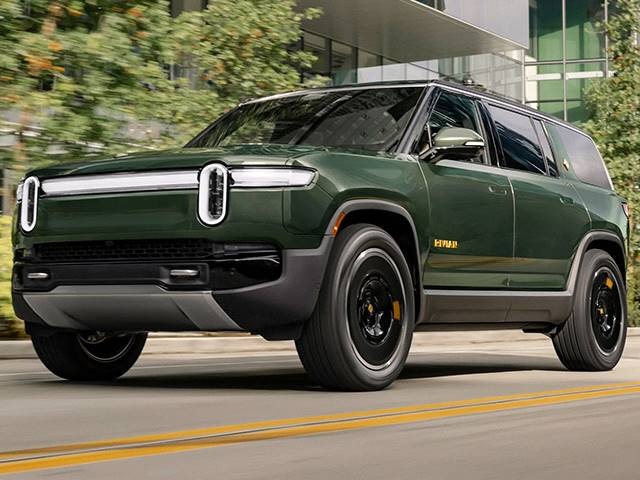Choosing the best is itself a test
For any auto journalist the task of choosing the best vehicle values of 2017 is a daunting one. Choosing those vehicles for Kelley Blue Book, a brand that’s been the Bible of automotive values for 90 years, can add another level of intimidation. Yet when our Editorial Staff approached this year’s selection process we were confident we would come to conclusions worthy of our trusted brand.
Our confidence sprung from the fact that we had been through similar exercises before. The Best Buy Awards, our premier such program, was created in 2014 to examine 2015 model-year vehicles and to determine which 12 of those represented the very best values in 12 specific vehicle categories that cover the bulk of the U.S. market. Further we decided to designate one of those vehicles as the Overall Best Buy, essentially our version of Best in Show.

We decided to embark on this ambitious endeavor because we believed by helping consumers identify their best choices in important vehicle categories we would be doing a big public service. Frankly, we doubted the usefulness of the traditional “Car of the Year” process that picks out a single new vehicle as the year’s best, feeling that often the choices are irrelevant to the vast majority of new-car buyers. And one thing we always insist on is being relevant to current new-car buyers.
Thus, we pursued the goal of identifying the 12 very best buys in their 12 segments plus an overall best buy, and we found, when we introduced our awards program to the public in late 2014, it was warmly accepted. From that day till now our Best Buys coverage has been among our most popular features on KBB.com. Why? Because it is really helpful. Of course, consumer acceptance gives one confidence, so we had a positive feeling about what we could accomplish this year, our third annual effort to pick the Best Buys.
The Cars We Drove: 12 Categories of Returning Champs and New Contenders
How the Process Works
As you might guess, choosing the best values from amongst a crop of some 350 make/models and near-innumerable trim combinations is a complicated one. Happily, we believe no organization is better equipped for that task than Kelley Blue Book. Both critical sides of our organization – data analysis and vehicle evaluation (what we call Editorial Content) – are brought to bear on the task. Each year our vehicle evaluator/editors research, write and publish more than 300 Expert Reviews and more than 1,000 pieces of written or video content about current vehicles. We’re hard-pressed to believe that any organization has more contact with the vast majority of vehicles on the American market than we do. At the same time our data-gatherers and analysts collect millions of data points regarding individual models, vehicle pricing and items associated with depreciation and cost of ownership. We drew on all of these resources as we assembled the field of vehicles that we would test in what is traditionally the final round of our process.
Using Past Experience
We had another important resource as well – our list of the Kelley Blue Book Best Buys of 2016, a list meticulously constructed using the same basic resources. Having this list is a boon, because it helps simplify to at least a certain extent the task we cut out for ourselves. It provides a very useful baseline list of contenders. We figure if a vehicle was named a Best Buy in 2016 and it remains largely unchanged, it is certainly the vehicle all other vehicles must beat to be chosen as the Best Buy in that category for 2017. And so the Best Buys of 2016 yielded a list of incumbents that included the Small Car and Overall winner Honda Civic, full-size SUV winner Chevrolet Tahoe, and Truck winner Ford F-150, among others as contenders.
Having the baseline list also enables us to forego testing vehicles that competed in the prior year but were not selected as Best Buys. The reasoning is that if a vehicle did not win against the reigning Best Buy and both are unchanged, there is no reason to believe that the a vehicle would unseat the Best Buy winner in the subsequent year. The thinking is sound, but there is also an exception or two that will be explained later in this story.
Choosing the best new vehicles
With the list of 2016 Best Buys in hand (you can see our coverage right here), we then assembled a list – or more precisely 12 lists – of all-new vehicles that we believed had some possibility of unseating the incumbent. This never-ending process draws on every press event we attend, every vehicle introduction we report and every comparison test we complete. At the same time we vet each potential contender with our data/analysis team to be certain it has positive cost-to-own and resale value parameters. If our driver/reporters think a car is great but its cost-to-own (CTO) is below par, it can’t be a Kelley Blue Book Best Buy.
After this substantial vetting took place we were left with a list of 12 incumbent Best Buys (the 2016 winners) and approximately three dozen potential contenders, all but a handful being all-new models or all-new generations of previous models. We then invited the individual manufacturers of those vehicles to provide us with representative examples for the back-to-back testing we conducted in three waves between the end of August and mid-October. In some segments there were as few as two vehicles; in others (the luxury segments in particular) there were a much larger number of participants. Each one was worthy of being invited to our in-house testing but we want to be very clear that an invitation does not imply that the invited vehicles are necessarily the top-rated vehicles in their segments. Other vehicles not involved in the competition this year could well claim those designations, but they were not invited to compete for the above-cited reason that if they didn’t prevail in the 2016 testing/evaluation there was no reason to believe they would prevail this year.
So now you have a description of the overall premise and parameters of the awards program. What follows is a description of what we found as we examined the participants in each category.
Small Car
The Honda Civic topped this incredibly crowded segment last year and also took our Overall Best Buy award, so the new entrants in the category had their work cut out for them. Still, the Hyundai Elantra and Chevrolet Cruze, both re-made for the 2017 model year, brought a lot to the party.

Our testers liked the Cruze’s exterior styling, its easy-to-use interior and its comfort-oriented ride. A surprising shortfall is in rear-seat roominess. The Elantra impressed us as an overall package that is feature-rich and easy to live with. As one of our testers wrote so incisively, “If you are looking for a comfortable small car that is economical to buy and to operate, you will find what you’re seeking in the Hyundai Elantra. It is more comfortable than the Civic in everyday driving, and its utterly conventional controls are very easy to understand and use. Further, it is filled with available features, including some pretty advanced pieces of safety equipment. The downside (for some) is the Elantra’s plain vanilla nature.”
In contrast to the two willing but bland competitors, what you get in a Honda Civic is a vehicle that appeals to both left- and right-brain individuals. It has all the rational aspects covered – stellar cost-to-own performance, good content-for-the-money ratio, an impressive safety story – and yet it also sings to the soul with its attractive exterior and superior fun-to-drive. It proves compact sedans don’t have to be boring, and it richly deserves to be our overall winner for an unprecedented second consecutive year.
Midsize Car
In 2016 Midsize Car was our most hotly contested category. Some of our Editors were proponents of the then-all-new Kia Optima. Others were strong proponents of the Honda Accord, one of the gold standards in the category and, at that point, freshly updated with a variety of changes. The discussion and the analysis grew heated, but finally – with a bit of trepidation caused by departing from the tried-and-true – we named the Kia Optima as Midsize Car Best Buy of 2016. In fact, the result was so close that this year we decided to fly in the face of established procedure and bring back the Honda Accord for a re-match. We also added the significantly enhanced 2017 Ford Fusion, which has a variety of interesting variants.
The three-way race proved equally hot with some of our experts big proponents of the Optima, others of the Accord. The Fusion was praised for its great exterior styling and its wide variety of engines, configurations and options, but resale value proved to be its Achilles’ heel against its top competitors. And in the final analysis resale value and cost-to-own were the major difference-makers in the choice of the Honda Accord over the Kia Optima. We like the features and driving experience of both vehicles, but Accord offers a measurable edge in overall ownership costs.
Full-Size Car
Full-size Car was a two-horse race this year. In the 2016 awards the Chevy Impala had taken the crown in a competition with the well-regarded Toyota Avalon, and since both vehicles were unchanged for 2016 we declined to invite Avalon this year. Instead, the Impala’s competition was the all-new Kia Cadenza.
Just as with the smaller Optima, the Cadenza proved compelling to many of our testers. They appreciated its plentiful luxury-car-like touches and its easy-to-use infotainment system. But the Cadenza is also significantly more expensive than the Impala, and that was a factor that helped swing the decision in favor of the incumbent. Many of us on the KBB.com Edit Staff feel the Impala is one of the most under-appreciated cars on the American market.
Small SUV
Last year the winner of the Small SUV Best Buy Award was the Honda CR-V, which also happens to be one of the most popular vehicles on the American market. It has helped lead the charge to vehicles that are called “crossovers” because they are SUV-like vehicles built on car rather than truck chassis. We invited the CR-V to defend its title only to be informed by Honda that a new CR-V was imminent but, sadly, would not be ready in time for our Best Buy testing. No worries. There are many great new small SUVs from which to choose, and after significant analysis we settled on the all-new Kia Sportage and significantly revised Ford Escape as our two contenders.
Both vehicles gained their supporters. The Escape wowed many of us with its athletic performance, its EcoBoost economy and its wide variety of trim levels. Meanwhile, we were equally impressed by the Kia Sportage’s all-around livability. Many of us felt it does a great impersonation of many of the CR-V’s positive attributes, while having a personality of its own. So when decision time came, the Sportage got our nod as Best Buy of 2017.
Midsize SUV
Midsize SUVs are becoming the family cars of the current generation, and there are many fine vehicles in the category, but only three made it to the top of our Best Buys consideration set: last year’s winner Honda Pilot, the perennially popular Toyota Highlander and the completely renewed Mazda CX-9. Butting up against their vehicle introduction deadline, Toyota could not provide us with an updated-for-2017 Highlander in time for our back-to-back testing, so that left the Mazda as the Pilot’s only challenger.
And the CX-9 proved to be a worthy competitor. Our testers were impressed by its exterior styling and its lush, luxury-car-like interior. With its SkyActiv turbocharged engine and suspension tuned for sporty driving, the CX-9 won kudos for its all-around driving abilities. But midsize SUVs should not be judged for their sporty handling so much as for their all-around versatility, and it was in all those categories that the Honda Pilot showed its overall superiority. Bigger, roomier and more filled with storage spaces, the Pilot simply delivers more utility for dollar spent.
Full-Size SUV
While the small and midsize SUV segments are dominated by crossovers (tall vehicles built on car chassis), the full-size SUV class is still the realm of traditional truck-based vehicles. Of those the Chevrolet Tahoe has been the dominant vehicle of the past generation, and it was our 2015 and 2016 Best Buy winner in the category. But this year there is a new kid on the block – an all-new Nissan Armada – that looked to have the chops to give the Tahoe a run for its money.
In our testing we found that the Armada offered a number of positive features. Several editors liked the ride quality of the Nissan, though some also noted it wasn’t particularly confident in corners and had a tendency to “float.” There was enthusiasm for the main instrumentation but some issues with the ancillary information and the organization of the controls. And then there was the massive second-row console whose space might have been better used as a pass-through to the third row. And so, while we felt “the Armada clearly has made significant strides as part of its makeover and has plenty of competitive features,” as one tester put it, we still believe the Chevrolet Tahoe is the Best Buy in the segment.
Minivan
In yet another head-to-head battle the well-regarded Toyota Sienna faced off against the Chrysler Pacifica, the heir to the legacy created by the Dodge Caravan and Chrysler Town & Country. Missing from the testing was last year’s winner in the category, the Honda Odyssey, since Honda was unable to provide a 2017 model year vehicle.
The Chrysler rolled into the battle with most of the advantages stacked in its favor since it is all-new for 2017 while the Sienna is carryover but features a new drivetrain. For those who would like to stretch their dollar the furthest, the Sienna would be a good choice. Its resale and cost-to-own figures are stellar. On the other hand, the Pacifica was the clear leader in innovation and features. As one of our testers wrote in his shared notes, “The Pacifica offers features not even available in the Sienna like low-speed active cruise, around-view camera and vacuum. I’m sure the next Sienna will be a very good van, but for now, the Pacifica is the one to get, no doubt in my mind.”
Truck
The incumbent winner, Ford F-150, was challenged by the new Nissan Titan half-ton pickup and the new-generation Honda Ridgeline. Certainly each of these trucks is aimed at a different part of the truck market, but each is going to find many consumer buyers, and that’s what we tested for in procedures that included driving the vehicles laden and towing a trailer.

The Ridgeline is the easiest to drive and most maneuverable of the three. One of our testers likened it to a Honda Pilot with a handy pickup bed grafted to the back, and that is not far from the truth. If you like the comfort, convenience and ergonomics of a Honda – and we certainly do – then you will find those same positive attributes in the Ridgeline. The new half-ton Titan is a solid player in a field of already well-established rivals that received mixed marks from our testers. They praised the generous rear-seat stow bin, the nicely damped electronic-locking tailgate and the off-road kit plus the best-in-class 5-year/100,000-mile bumper-to-bumper warranty. But they felt the steering was heavy and rear-seat room subpar. In the end last year’s champ – the Ford F-150 – became this year’s champ.
Performance Car
The three players in this category possess three distinct personalities. The incumbent winner, Chevrolet Corvette, perennially presents a very arresting (sometimes literally) supercar-level performance at a price that is at least somewhat accessible to regular human beings with regular jobs. Porsche 718 Boxster (and its close and closed cousin, the untested 718 Cayman) brings to bear a European esthetic and more finesse than sheer unbridled power. And the Fiat 124 Spider is a very cleverly revised version of the Mazda MX-5 Miata, one of the most popular sports cars of all time.
Our testers liked all the things FCA did to make the Fiat 124 a different animal than the MX-5. Its exterior styling does reflect the original Fiat 124 that many Baby Boomers lusted for as children. Dynamically, the new 124 is a blast to drive, while establishing a different feel than the Miata. There are plenty of good reasons to buy one. That said, the competition for the award in the class evolved to a battle between Corvette and 718 Boxster. Certainly that is an apples-to-oranges comparison, but we ended being very impressed by the value and predicted good cost-to-own performance of the 718 Boxster, and that’s what this competition is designed to ferret out.
Electric/Hybrid
This year Chevrolet Volt, the winner of the 2016 award in this category, was confronted with the Toyota Prius and the all-new Toyota Prius Prime plug-in hybrid. As the “safe choice” in the segment the Prius has a lot of adherents who find that its positive attributes outweigh shortfalls like the interior noise. The Prius also offers a compelling cost-to-own history.
That acknowledged, this horserace was between the year-old Volt and the all-new Prius Prime, a vehicle that has significant differences from its namesake. We continue to admire the Volt, but in a close battle the new Prius Prime and its Tesla-like infotainment screen became our choice.

Luxury Car
If you want to consider an embarrassment of riches, look to our Luxury Car field that included such worthy entrants as Audi A4, Buick LaCrosse, Genesis G90, Mercedes-Benz E-Class, Mercedes-Benz C-Class, Volvo S90 and Cadillac CT6. The fact is there is a lot to like about each of these cars. The Buick offers classic American-car virtues like quiet and comfort. The Genesis, Hyundai’s flagship entry into the luxury market, does a remarkable job of delivering an extensive group of features and a creditable driving experience right out of the box. The Volvo captures the Scandinavian essence beautifully. And the Cadillac CT6 combines international technology with a flair that is unique to the brand.
The two Mercedes-Benz vehicles we considered are absolutely stellar, and the all-new E-Class does a remarkable impression of an S-Class in the features it offers. Candidly, we would be happy to have any of these worthies taking up space in our garage. But in the final reckoning the impressive driving prowess and ergonomic niceties of the A4 won us over.
Luxury SUV
This category presented a panoply nearly as diverse as the Luxury Car category. First on the list was incumbent champ, the Lexus RX, which is also the category’s sales leader. Its rival last year, the Volvo XC90, proved so compelling we had to bring it back for a re-match. After that we invited three newcomers: Buick Envision, Cadillac XT5 and Mercedes-Benz GLC.
Envision won praise for its ride quality, quietness and feature set at a value price. XT5 struck us as being a big advancement over the previous-generation SRX and as a vehicle we could easily live with every day. The XC90 continued to impress us with its strikingly good interior and its fun-to-drive nature, not something you typically see in a three-row. And the RX is still the RX – great resale, great ownership experience, fine feature set. But we couldn’t help but be wowed by the Mercedes-Benz GLC that is our choice in this hotly contested category.
2017 Best Buy Winners

